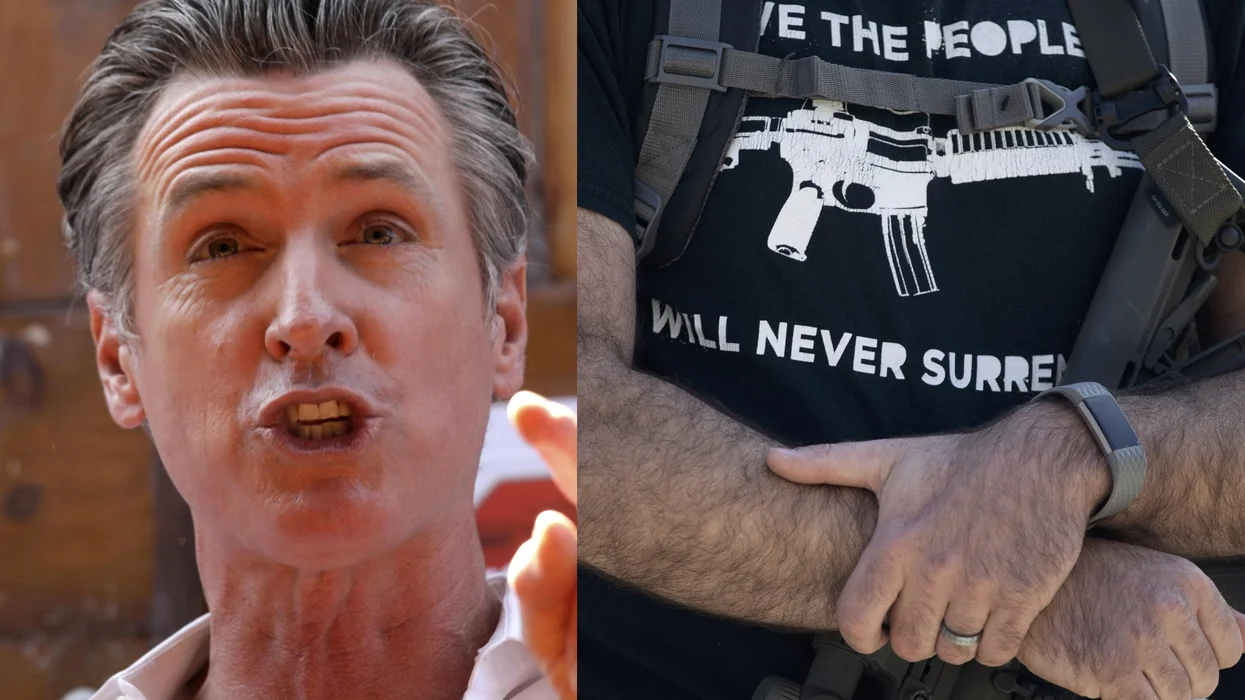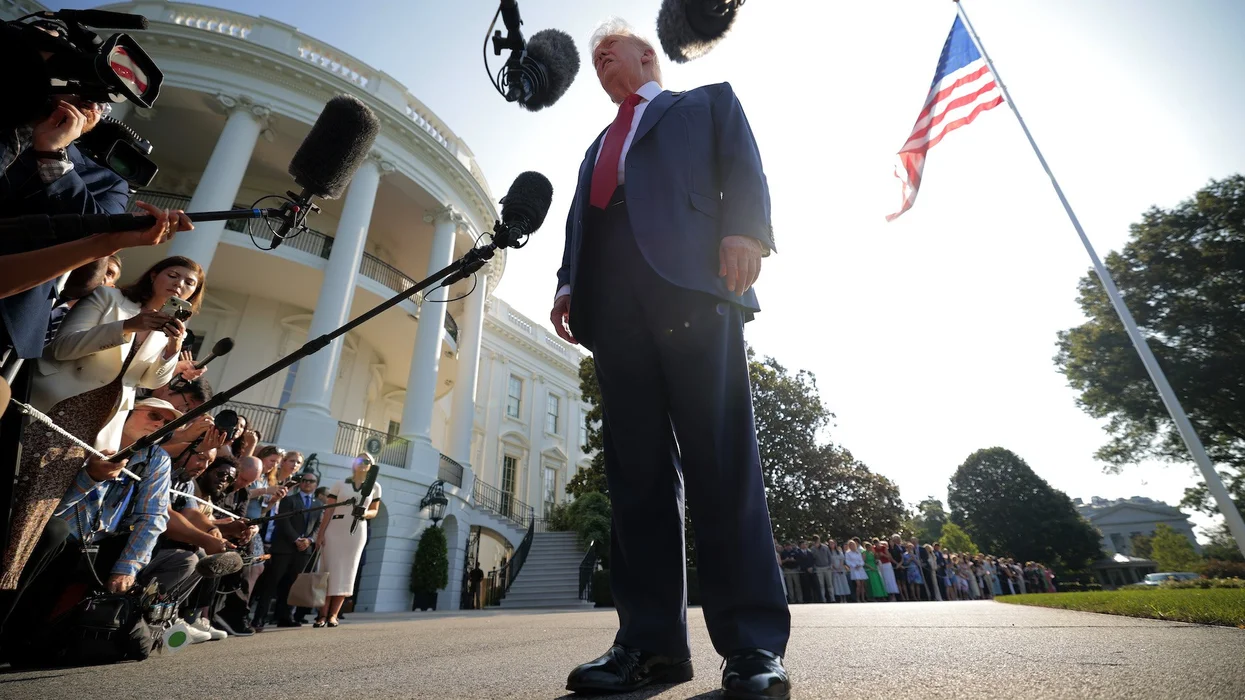
© 2025 Blaze Media LLC. All rights reserved.
Church-State Separatism Run Amok in Exclusion for Religious Employees From Loan-Forgiveness Program
November 02, 2012
In America, higher education is monumentally expensive – and the problem only seems to be intensifying, especially for those individuals who enter low-paying fields after they complete their degrees. The U.S. government decided to confront the issue head-on, but with a controversial caveat. While Congress successfully crafted and passed the College Cost Reduction and Access Act of 2007 to help citizens more readily achieve their education aspirations, there’s a troubling provision in the final version of the law that raises eyebrows – a loan forgiveness program for public sector and service employees that explicitly excludes individuals who work in the faith sphere.
While the specifics weren’t initially laid out, in early 2012, details surrounding the loan program were finalized. Somehow, a factor that escaped most major media outlets was a regulation that explicitly excludes any individual whose primary work involves “religious instruction, worship services, or any form of proselytizing.”
This exemption – which wasn’t present in the original text of the bill – was later added to the measure in 2008, during George W. Bush’s presidency. Then, this year, the Obama administration reiterated and expounded upon the policy (ironically, this occurred during the same time that the controversial contraceptive mandate and the so-called War on Religion came to fruition).
Before covering why the faith exclusion is problematic, let’s further explore the price issue and take a quick look at how the program works. Problems controlling the price of higher education are nothing new. Earlier this year, Bloomberg reported that the cost of college increased by a staggering 1,120 percent since record-keeping commenced in 1978. So, to help those facing the constraints of this unsustainable system, the government stepped in with the aforementioned loan forgiveness program. Here’s how it works.
Individuals who are employed by government and 501(c)(3) non-profit employers for an annual average of 30 hours per week now qualify for federal loan forgiveness -- so long as they make 120 consecutive payments while employed by qualifying entities. Any federal loan payments made after October 1, 2007 will be eligible, though the first cancellations won’t be granted until October 2017.
On the surface, this appears prudent, but considering our current fiscal dilemma, when you take a closer and more introspective look, it’s somewhat concerning. After all, the nation is $16 trillion in debt, with no sound plan in sight to fix America’s financial conundrum. Also, let’s consider that many citizens – particularly conservatives – will find it reprehensible that the government will now be loaning and then subsequently forgiving monies.
The group of those eligible is far-reaching as the regulations say that, “any [tax exempt] employment with federal, state, or local government” qualifies for the “Public Service Loan Forgiveness Program” (PSLFP). A web site setup to explain the program also notes that, “the type or nature of employment with the organization does not matter,” nor do “the type of services that these public organizations provide.” The non-profit provisions, while somewhat more narrow, also cover a wide array of services (labor unions and partisan political groups are not able to take part).
The lack of restriction on the public service front is particularly odd, considering that past studies have shown that those working in these positions earn more, on average, than their private-sector counterparts. Thus, those being forgiven by the federal government may actually be earning more income and enjoying greater benefits than their fellow taxpayers who are footing the bill for the tuition program.
Now that we’ve tackled the economic issues associated with the program, we can move on to the religious exclusion. It’s hard to deny that churches and faith groups are often times on the forefront of assisting in moments of crisis. Furthermore, these non-profit organizations often serve as the only lifeblood to communities in need.
Pastors, rabbis and other faith-leaders-in-training, like aspiring teachers, nurses and other non-profit professionals, dole out thousands of dollars for their degrees. While it’s understandable why partisan political groups and labor unions would be prevented from participating in the program, why should faith leaders be excluded from partaking in the same loan forgiveness benefits – particularly those religious leaders who devote major portions of their time to feeding the poor and homeless, to securing neighborhoods and to caring for the public’s well-being?
The separation of church and state argument, in this case, is fairly weak. If faith leaders of any and all denominations and creeds who are engaged in a socially-conscience non-profit or church were included, there would truly be no cause for concern or fear about one religion being favored over another. While a reasonable separation of church and state is warranted, punishing religious leaders and faith-based non-profit workers seems patently unfair. Yet, this is exactly what the government appears to be sanctioning.
A portion of the explanation for the PSLFP reads, “For purposes of the full-time requirement, your qualifying employment at a not-for-profit organization does not include time spent participating in religious instruction, worship services, or any form of proselytizing.” But what about non-profits that hinge upon using spiritual means for helping the poor and homeless exit the welfare system? What about groups that share the gospel and successfully use it as a tool to help those in need to learn the skills needed to achieve gainful employment?
In addition to religious non-profits, houses of worship, too, provide important services to the communities in which they reside. There is ample evidence that churches’ worth to local communities is profound. Consider a Christianity Today report from April 2011 that assessed the value of a church. It reads:
Does a congregation’s tax-exempt status outweigh the economic value it adds to its community? The University of Pennsylvania’s Ram Cnaan has long been searching for a specific answer. In a 1997 study, he found that urban congregations provide, on average, $140,000 worth of services annually. In 2009, Cnaan (who describes himself as nonreligious) revised his estimate to $476,663.24. Now he’s about to release an even more detailed pilot study focusing on 12 historic Philadelphia congregations, including First Baptist Church, whose annual value to the local economy Cnaan’s team places conservatively at $6,090,032 (nearly ten times its annual budget).
While some might argue that the program simply shouldn’t exist in the first place (or, that if it does, income should come into play when considering who benefits from forgiveness and cannot), the notion that clergy and faith workers are excluded is unacceptable. With pastors and non-profit workers also having tens of thousands of dollars in loans, while often making meager salaries, preventing them from partaking in the benefits that secular employees enjoy is non-sensical and yet another example of church-state separatism run-amok.
Billy Hallowell is a journalist and the faith editor at TheBlaze. His work can be read here.
Want to leave a tip?
We answer to you. Help keep our content free of advertisers and big tech censorship by leaving a tip today.
Want to join the conversation?
Already a subscriber?
Billy Hallowell is a digital TV host and interviewer for Faithwire and CBN News and the co-host of CBN’s "Quick Start Podcast."
Billy Hallowell
Billy Hallowell is a digital TV host and interviewer for Faithwire and CBN News and the co-host of CBN’s "Quick Start Podcast."
more stories
Sign up for the Blaze newsletter
By signing up, you agree to our Privacy Policy and Terms of Use, and agree to receive content that may sometimes include advertisements. You may opt out at any time.
Related Content
© 2025 Blaze Media LLC. All rights reserved.
Get the stories that matter most delivered directly to your inbox.
By signing up, you agree to our Privacy Policy and Terms of Use, and agree to receive content that may sometimes include advertisements. You may opt out at any time.





